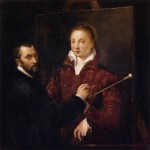
The image we’ve chosen to represent the upcoming Magnificat program featuring music by four women from the 17th century was painted by the extraordinary Sofonisba Anguissola in 1550. An exceptional work that captures the place of women in late Renaissance, the painting is both a self portrait, a portrait of her master teacher, and a compelling allegory of women as defined by men of the period. It aptly symbolizes the barriers to artistic expression faced by women and the fruits of the individual struggle in the face of those barriers.
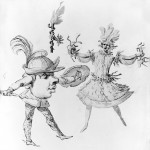
When, in 1673, Marc-Antoine Charpentier became the principal composer to the King’s Troupe (Troupe du Roy), he became involved in the ongoing struggle between the company’s director and chief playwright, Jean-Baptiste Molière, and the composer Jean-Baptiste Lully. Throughout the 1660s, Molière and Lully had worked closely in providing for the king’s entertainment a series of multi-generic experiments that combined theater, ballet, vocal numbers, choruses, and machine effects. But by the spring of 1672 Lully had decided that his own future lay in opera. Having witnessed the successes of Perrin and Cambert with pastoral opera, Lully set about obtaining the royal opera privilege and, thereafter, a series of draconian decrees designed to protect his monopoly and reduce his musical competition.
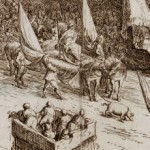
Paul at the excellent BibliOdyssey blog, has a post with a series of fascinating prints depicting Bologna’s annual Festa della Porchetta – the Festival of the Suckling Pig, celebrated by the Bolognese for five centuries until the arrival of Napolean’s army in 1796. The tradition has apparently been revived in the last decade – including a shared roasted pig – to help spread peace in the city.

Monteverdi’s Vespers of 1610 was only the most elaborate of hundreds of collections of music for Vespers published at the turn of the 17th Century. What motivated this remarkable repertoire? Magnificat will perform Monteverdi’s 1610 Vespers on the weekend of April 23-25 and will also participate, along with Artek, AVE, The Marion Verbruggen Trio, Music’s Recreation, Sacabuche!, and Archetti, in a concert celebrating a century of Venetian vespers music from Monteverdi to Vivaldi as part of the Berkeley Early Music Festival and Exhibition on June 13.
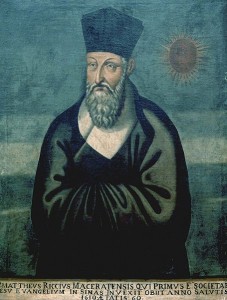
Matteo Ricci was the first Westerner to be invited into the Forbidden City in Beijing. During his years in China, Ricci wrote extensively and maintained an unprecedented dialogue with the Chinese intelligentia.
On his remarkable Galileo 1610 website, Mark Thompson writes about the role of music Gilileo's scientific work:
“Thus the effect of the fifth is to produce a tickling of the eardrum such that its softness is modified with sprightliness, giving at the same moment the impression of gentle kiss and of a bite.”
Music played not only a unique, but an essential role in leading Galileo to his new physics. Because it is an art demanding precise measurement and exact divisions, music reflected the spirit of Galileo’s science.
One of Galileo’s most important discoveries, the law of falling bodies, can actually be traced to his early musical experiments with his father, Vincenzo Galilei, a musicologist and lute virtuoso. Together, they discovered the motions of pendulums while measuring with weights, the tensions of lute strings.
Galileo was an outstanding lutenist himself, whose “charm of style and delicacy of touch” surpassed even that of his father. ...

According to author Leo Rosten in his The Joys of Yiddish, the first printed mention of the word bagel is in the 1610 Community Regulations for the city of Krakow, Poland. The regulations state that "bagels would be given as a gift to any woman in childbirth." The ring shape may have been seen as a symbol of life.
It was also in 1610 that Europe got its first taste of tea, a beverage that had been popular for centuries in China and Japan, as Amsterdam received its first shipment of the intoxicating leaves. The Dutch East India Company initially marketed tea as an exotic medicinal drink, but it was so expensive that only the very wealthy could afford it and it only became available to the general public later in the century.
In 1610, Cornelius Drebbel, best known perhaps for his invention of the submarine, applied the principles he had used ...

via Telegraph.co.uk
The mannerist painter Michelangelo Merisi da Caravaggio died on July 18 1610 at the age of 39 and the circumstances of his death have been controversial ever since. It has been suggested that he contracted syphilis or even that he was assassinated but anthropologists from the universities of Pisa, Ravenna and Bologna are studying other theories – that he contracted malaria while traveling in Italy or that he suffered from lead poisoning. The anthropologists hope to prove their theory by carrying out DNA tests on bones which they believe are the remains of the Renaissance artist.
Renowned for his hot temper, heavy drinking and violent temperament Caravaggio was forced to go on the run in 1606 after killing a man in a tavern brawl, a crime for which he ...
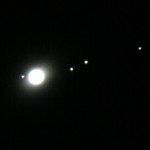
In January 1610 Galileo Galilei first observed the four moons of Jupiter now known, appropriately, as "The Galilean Moons". The largest of the many moons of Jupiter, Galileo initially named his discovery the Cosmica Sidera ("Cosimo's stars") but they are now known by the names given by Simon Marius in his 1614 Mundus Jovialis: Io, Europa, Ganymede and Callisto - the lovers of Zeus.
Galileo first noticed Saturn's peculiar shape later in 1610, well after the publication of his landmark book Sidereus Nuncius. The story of how he initially revealed the new discovery to his fellow astronomers by means of an anagram is told in a 1974 article by Albert van Helden of Rice University.
Galileo's discovery of celestial bodies orbiting something other than the Earth dealt a serious blow to the Ptolemaic, or the geocentric, cosmology in which the universe orbits around the Earth. The possibility of viewing ...
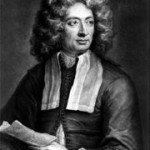
Few musicians of the seventeenth century enjoyed the exalted status bestowed on Arcangelo Corelli (February 17, 1653- January 19, 1713). He was called the ‘new Orpheus of Our Times’ and the ‘divine Arc Angelo’, a clever pun on his Christian name and the Italian word for a bow (arco). The Englishman musician and writer Roger North described Corelli’s music as ‘transcendant’, ‘immortal’ and ‘the bread of life’ to musicians. Renowned as a virtuoso performer, an influential composer, and sought-after teacher, Corelli commanded respect and praise throughout Europe at the turn of the 18th century.
The fifth child born to a prosperous family of landowners in Fusignano; Corelli’s first musical study was probably with the local clergy, then in nearby Lugo and Faenza, and finally in Bologna, where he went in 1666. In Bologna he studied with Giovanni Benvenuti and Leonardo Brugnoli, the former representing the disciplined style of the Accademia filarmonica ...
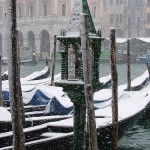
Like most I suspect, when I think of Venice I imagine a sun-baked Piazza of San Marco, but of course winter visits Venice each year and it seems that before the advent of modern heating, the experience was particularly brutal. In his engaging journals recounting his three years in Venice during the 1860s, W.D. Powell describes the attitude of the locals to winter:
"The Venetians pretend that many of the late winters have been much severer than those of former years, but I think this pretense has less support in fact than in the custom of mankind everywhere to claim that such weather as the present, whatever it happens to be, was never seen before."
In common with other places (like California) where the weather is generally agreeable, houses are built with a view to coolness in summer and one can only imagine that the experience of a Christmas or Epiphany feast ...
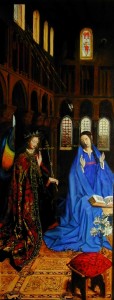
Last Sunday, I attended Artek’s performance of Monteverdi’s Vespro della Beata Vergine at the National Gallery in Washington DC. It was lovely to hear a fine performance of this masterpiece (a piece I’m thinking about alot these days) in one of my favorite buildings in the world.
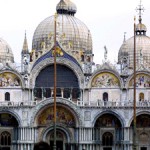
In the second of a three part biographical essay, Steven Saunders discusses the decade that Alessandro Grandi spent in Venice, the period from which most of the music Magnificat will be performing in February was drawn.
Grandi’s short tenure at the cathedral in Ferrara lasted at least through early 1617, since the second impression of the Primo libro de motetti (Venice: Giacomo Vincenti, 1617), as well as the second reprinting of the Madrigali concertati (Venice: Giacomo Vincenti, 1617) still identify him as maestro di cappella there. By 31 August, however, he had returned to Venice to accept a post as a singer in the chapel of St. Mark’s at the relatively generous salary of eighty ducats per year. He quickly assumed additional responsibilities, first as head of the Compagnia di San Marco (from 22 September 1617), then as the singing teacher at the seminario gregoriano (from March 1618), and finally as ...

While reveling in the beauty of music from the past, we seldom consider the “office politics” and professional competition that surrounded its composition and original performance. The goal of simultaneously creating beauty and paying rent has always been proven challenging and even among highly respected and gainfully employed artists, competition has frequently led to conflict.
In his biographical sketch of Alessandro Grandi, published previously on this blog, Steven Saunders mentions the composer’s rapid rise to positions of authority at the Basilica of San Marco after returning from Ferrara in 1617. Among the positions that he attained was capo, or head, of the Compagnia di San Marco, a group not unlike a modern musicians’ union that organized singers for “freelance work” outside the basilica.
Already in the 15th Century, musical activity outside the Basilica had been organized through confraternities known as Scuole Grandi. In his seminal article on organizations of musicians in Venice, ...

Representing Magnificat, I will be attending the annual conference of the American Musicological Society in Philadelphia this later this week. It has been several years since I’ve had the opportunity to attend the AMS conference and I am looking forward to meeting old colleagues, making new friends and listening to the wide range of presentations on current work being done in musicology. The conference program is available for download (PDF) and the abstracts for papers can be downloaded here (PDF). Over the week I will be highlighting some of the sessions relevant to the music and culture of the 17th Century and posting abstracts from the scheduled papers.
A particularly interesting short session on the fascinating figure Athanasius Kircher scheduled for the opening afternoon of the conference. I encountered Kircher while preparing the first program on the very first Magnificat series concert in 1992, which included Carissimi’s magnificent oratorio Jephte. In ...
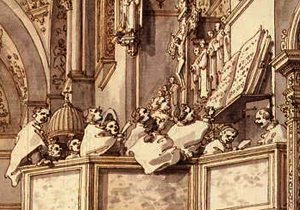
As Magnificat turns our attention to December's performances of the mass setting by Chiara Margarita Cozzolani, I decided it would be a good time to repost and expand this article that I wrote two years ago after our performance of a reconstruction of the mass celebrating the 1607 re-dedication of St. Gertrude's Church in Hamburg. The performance of sacred works within a re-construction of a contemporaneous liturgical context has been of feature of Magnificat's concert series since our first season in 1992 with our performances of Schütz's Weinachtshistorie (Christmas Story) in collaboration with the San Francisco Early Music Society. Since then, Magnificat has performed over two dozen programs based on reconstructions of historical liturgies.
It has almost become an "article of faith", reinforced by comments from members of our audience and the musicians who have contributed their talents to these performances, that the experience of the work, whether a setting of ...
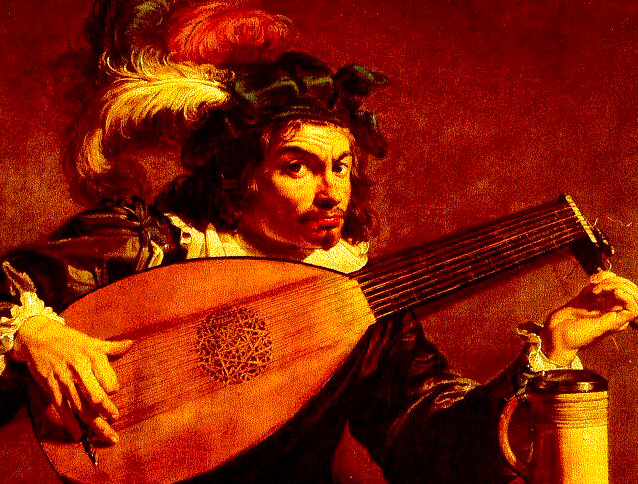
A very 2009 moment occurred the other day when, allowing myself to be distracted from working on the score for La Liberazione di Ruggiero, I noticed a tweet from @krashangel about the fact that the ciaconna used in Rene Jacobs’ recording and DVD of Cavalli’s La Calisto was actually not by Cavalli, but rather by Tarquinio Merula. Before I had a chance to marvel at the fact that Tarquinio Merula had actually been mentioned in Twitterspace, there was a follow up tweet observing, accurately, that "it was the custom to use ritornelli and sinfonie composed by others as a contingent ‘filler’ in Venetian operas in the 17th century".
What made this tweeting encounter remarkable was that at that very moment (or at least before being distracted) I was in the process of doing just that: inserting incidental music into an opera score (albeit a Florentine opera) to allow for scene changes, ...
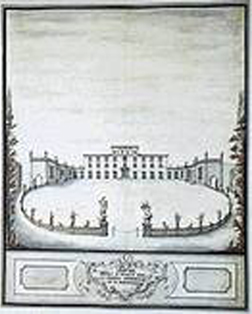
(This is the second of a three part essay on Francesca Caccini and La Liberzione di Ruggiero, which Magnificat will perform October 16-18. The first part, a biographical sketch of Francesca, "About Francesca", was posted here earlier.)
On February 3, 1625, sometime in daylight, 160 gentildonne and their husbands, and an unknown number of foreign guests rode in carriages out the southeastern gate of Florence, and half a mile up a tree-lined avenue to a villa atop the nearest hill that had very recently been renovated as the personal palace of Tuscany’s regent, Archduchess Maria Maddalena d’Austria. Leaving their carriages in a grassy courtyard guarded by two squadrons of armed cavalry, the Archduchess’ guests were welcomed into the palace by a military commander, and led to bench seats in a temporary theatre built in the villa’s loggia, to hear a new commedia in musica based on a well-known plot (two sorceresses ...
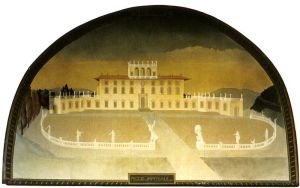
Chloe Veltman recently posted an interesting commentary on the notion of "site specific theatre" with reference to the recent production of Dido and Aeneas by San Francisco's Urban Opera ("Not All Site Specific Theatre is Created Equal"). She proposed that "in order for a theatrical production to be site specific, it needs to be conceived specifically for the space in which it is produced," and therefore "space becomes a performer, with the potential to change the entire relationship between text, visuals, sounds and the human body in fascinating ways."
In the context of her article I personally like her narrow definition, but it got me thinking that since any work of performance art exists only in the moment of performance, each performance is in some sense a new work, created freshly in a new "site" and therefore "site specific" for that performance.
Of course what Chloe was refering to with her definition ...

Isabella Leonarda
Sonata duodecima (1693)
Magnificat
Rob Diggins, violin
Warren Stewart, violoncello
David Tayler, theorbo
Hanneke van Proosdij, organ
live, unedited performance
February 2, 2003
St. Gregory Nyssen Church
San Francisco CA
[audio http://votetrustusa.org/Magnificat/Isabella%20Sonata%2012%20030202.mp3]
Download this Track
In 1724, the eminent theorist and collector music Sébastian de Brossard wrote in praise of the works of Isabella Leonarda that “all of the works of this illustrious and incomparable composer are so beautiful, so gracious, so brilliant and at the same time so knowledgeable and so wise, that my great regret is in not having them all.”
Isabella’s instrumental works, which appeared in 1693, are apparently the earliest published sonatas by a woman. The collection consists of eleven trio sonatas and one sonata for solo violin and continuo. One of her most harmonically adventurous works, the Sonata duodecima is in seven parts, including two recitative like sections.
Listen to More Music by Magnificat


















